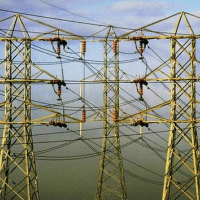Why Attempts to Modernize U.S. Power Grid are such a Mess

“Balkanization” is the word some politicians use to describe the United States’ electrical grid—a system of transmission lines and power generators run by regional operators focused on local, not national, needs and concerns.
This state of affairs has made it challenging to modernize the grid, which needs tens of billions of dollars in upgrades just to keep the system running as is. If the country wants to ramp up contributions from renewable energy sources, like wind power, the cost could eclipse more than $100 billion.
Bill Richardson, former energy secretary under President Bill Clinton, has described the U.S. electrical system as “third-world” and “balkanized,” due to the fact that there are 500 separate companies and suppliers involved, each with narrow agendas.
“Given the history of this particular industry and its complexity, [improving the grid] is just not going to happen, at least not any time soon,” James J. Hoecker, a former member of the Federal Energy Regulatory Commission, told The New York Times.
One key stumbling block is “resource nationalism,” according to Hoecker, in which states want to use local resources (coal or renewables), rather than importing power from neighbors in a way that could be more economical.
This problem and others could get in the way of President Barack Obama’s proposal to strengthen the power grid while reducing the nation’s output of greenhouse gases.
Even if the White House can get the political support together for his plan, there are heavy financial costs. One redesign of the grid would reduce carbon dioxide emissions by replacing coal with wind energy. But the price tag is $16 billion.
Another, more far-reaching redesign that would integrate wind on a larger scale would cost $115.2 billion.
Meanwhile, if the government decided to skip adding renewables altogether, the country would still need to spend $18.5 billion on new transmission lines just to keep the grid operating as usual.
-Noel Brinkerhoff
To Learn More:
Ideas to Bolster Power Grid Run Up Against the System’s Many Owners (by Matthew Wald, New York Times)
U.S. Energy Grid under Attack (by Noel Brinkerhoff and David Wallechinsky, AllGov)
- Top Stories
- Unusual News
- Where is the Money Going?
- Controversies
- U.S. and the World
- Appointments and Resignations
- Latest News
- Musk and Trump Fire Members of Congress
- Trump Calls for Violent Street Demonstrations Against Himself
- Trump Changes Name of Republican Party
- The 2024 Election By the Numbers
- Bashar al-Assad—The Fall of a Rabid AntiSemite






Comments